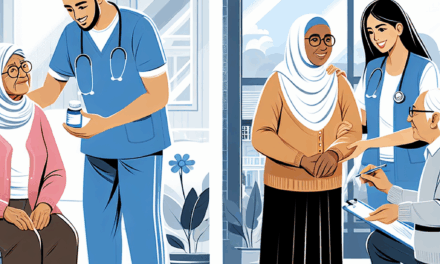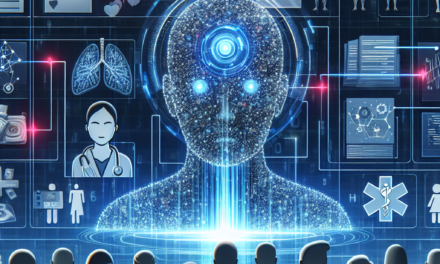GPs Demand My Health Record Revamp and Other Updates

The healthcare landscape is rapidly evolving, with technology playing a pivotal role in transforming how patient data is managed and accessed. One of the most significant developments in this area is the introduction of digital health records, such as My Health Record in Australia. However, as with any technological advancement, there are growing pains and areas for improvement. General Practitioners (GPs) are at the forefront of this transformation, demanding a revamp of the My Health Record system to better serve both healthcare providers and patients. This article delves into the reasons behind these demands, explores the current state of My Health Record, and examines potential updates and improvements.
The Current State of My Health Record
My Health Record is Australia’s national digital health record system, designed to provide a comprehensive and accessible repository of patient health information. Launched in 2012, it aims to improve healthcare delivery by ensuring that critical health data is available to authorized healthcare providers when needed. Despite its potential benefits, the system has faced criticism and challenges since its inception.
One of the primary issues with My Health Record is its adoption rate. While the system was initially opt-in, it transitioned to an opt-out model in 2018, leading to a significant increase in the number of records created. However, many Australians remain skeptical about the system’s security and privacy measures, resulting in a substantial number of individuals opting out.
Moreover, the usability of My Health Record has been a point of contention among healthcare providers. GPs, in particular, have expressed concerns about the system’s interface, which they find cumbersome and time-consuming to navigate. This has led to underutilization of the system, with many GPs preferring to rely on traditional methods of record-keeping.
Despite these challenges, My Health Record has the potential to revolutionize healthcare delivery in Australia. By providing a centralized repository of patient data, it can facilitate better coordination of care, reduce duplication of tests and procedures, and improve patient outcomes. However, to realize these benefits, significant updates and improvements are necessary.
Why GPs Are Demanding a Revamp
General Practitioners are the backbone of primary healthcare, often serving as the first point of contact for patients. As such, they play a crucial role in the success of any digital health record system. GPs have been vocal about their dissatisfaction with My Health Record, citing several reasons for their demand for a revamp.
Firstly, GPs are concerned about the system’s impact on their workflow. The current interface is not user-friendly, requiring multiple clicks and navigation through various screens to access patient information. This not only increases the time spent on administrative tasks but also detracts from the time available for patient care.
Secondly, GPs have raised concerns about the accuracy and completeness of the data in My Health Record. Incomplete or outdated information can lead to errors in diagnosis and treatment, potentially compromising patient safety. GPs are calling for improvements in data integration and interoperability to ensure that the information in My Health Record is accurate and up-to-date.
Another significant issue is the lack of training and support for GPs in using My Health Record. Many GPs feel ill-equipped to navigate the system, leading to frustration and reluctance to use it. Providing comprehensive training and support is essential to increase adoption and utilization of the system.
Finally, GPs are concerned about the security and privacy of patient data in My Health Record. While the system has implemented several security measures, there have been instances of data breaches and unauthorized access. GPs are calling for enhanced security protocols to protect patient information and build trust in the system.
Potential Updates and Improvements
To address the concerns raised by GPs and improve the functionality of My Health Record, several updates and improvements can be considered. These changes aim to enhance the usability, accuracy, and security of the system, ultimately benefiting both healthcare providers and patients.
One potential update is the redesign of the user interface to make it more intuitive and user-friendly. By streamlining the navigation process and reducing the number of clicks required to access information, GPs can spend less time on administrative tasks and more time on patient care. Incorporating features such as customizable dashboards and quick access to frequently used information can further enhance the user experience.
Improving data integration and interoperability is another critical area for improvement. By ensuring that My Health Record can seamlessly integrate with other healthcare systems and databases, GPs can access a more comprehensive and accurate view of a patient’s health history. This can be achieved through the implementation of standardized data formats and protocols, as well as collaboration with other healthcare providers and organizations.
Providing comprehensive training and support for GPs is essential to increase adoption and utilization of My Health Record. This can include offering workshops, online tutorials, and one-on-one support to help GPs become more comfortable and proficient in using the system. Additionally, creating a dedicated support team to address any technical issues or concerns can further enhance the user experience.
Enhancing the security and privacy of patient data is crucial to building trust in My Health Record. This can be achieved through the implementation of advanced encryption technologies, regular security audits, and strict access controls. Additionally, educating patients and healthcare providers about the importance of data security and privacy can help mitigate concerns and increase confidence in the system.
Case Studies and Examples
To better understand the potential impact of a revamped My Health Record system, it is helpful to examine case studies and examples from other countries that have implemented similar digital health record systems. These examples can provide valuable insights into best practices and potential pitfalls to avoid.
One notable example is the United Kingdom’s National Health Service (NHS) Digital program, which aims to provide a comprehensive digital health record for every patient by 2024. The program has faced challenges similar to those of My Health Record, including concerns about data security and privacy, as well as issues with data integration and interoperability. However, the NHS has made significant progress in addressing these challenges through collaboration with healthcare providers and the implementation of advanced technologies.
Another example is Estonia’s e-Health system, which is widely regarded as one of the most advanced digital health record systems in the world. The system provides a centralized repository of patient data, accessible to authorized healthcare providers and patients. Estonia’s success can be attributed to its focus on data security and privacy, as well as its commitment to interoperability and data integration.
These case studies highlight the importance of collaboration, advanced technologies, and a focus on security and privacy in the successful implementation of digital health record systems. By learning from these examples, Australia can make informed decisions about the future of My Health Record and ensure its success.
The Future of My Health Record
The future of My Health Record is promising, with the potential to revolutionize healthcare delivery in Australia. However, to realize this potential, significant updates and improvements are necessary. By addressing the concerns raised by GPs and implementing the proposed changes, My Health Record can become a valuable tool for healthcare providers and patients alike.
One potential future development is the integration of artificial intelligence (AI) and machine learning technologies into My Health Record. These technologies can help analyze and interpret patient data, providing valuable insights and recommendations for healthcare providers. This can lead to more accurate diagnoses, personalized treatment plans, and improved patient outcomes.
Another potential development is the expansion of My Health Record to include additional health data, such as genetic information and social determinants of health. By providing a more comprehensive view of a patient’s health, healthcare providers can make more informed decisions and provide more holistic care.
Finally, the future of My Health Record will likely involve increased collaboration with other healthcare providers and organizations. By working together, healthcare providers can share best practices, address common challenges, and ensure the success of digital health record systems.
Conclusion
In conclusion, the demand for a revamp of My Health Record by GPs highlights the need for significant updates and improvements to the system. By addressing concerns related to usability, data accuracy, training, and security, My Health Record can become a valuable tool for healthcare providers and patients alike. By learning from international examples and embracing new technologies, Australia can ensure the success of My Health Record and revolutionize healthcare delivery in the country. The future of My Health Record is promising, with the potential to improve patient outcomes, enhance care coordination, and reduce healthcare costs. However, to realize this potential, collaboration, innovation, and a focus on security and privacy are essential.





